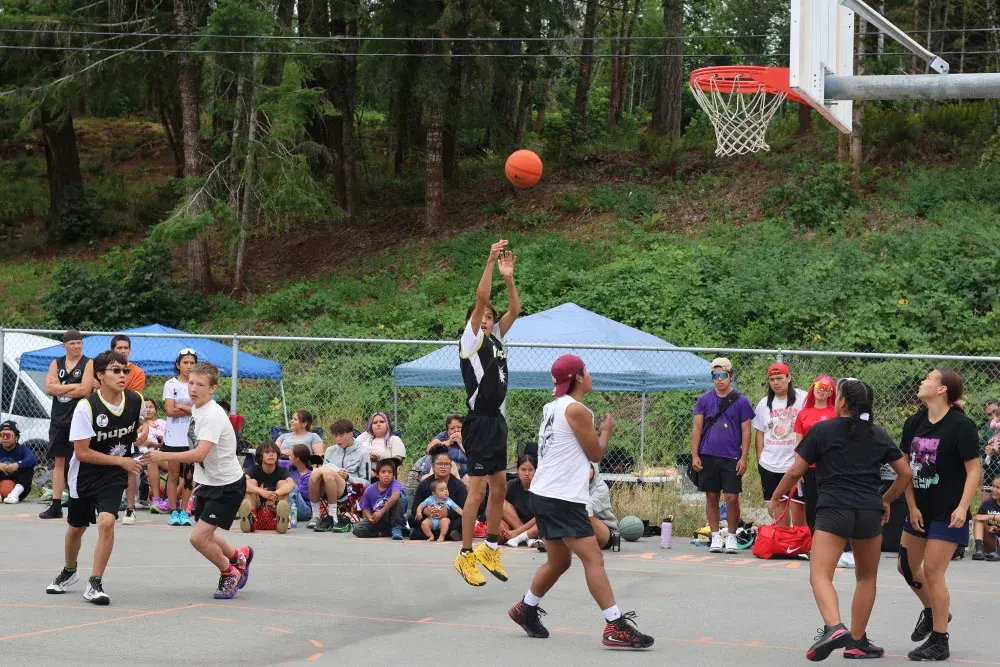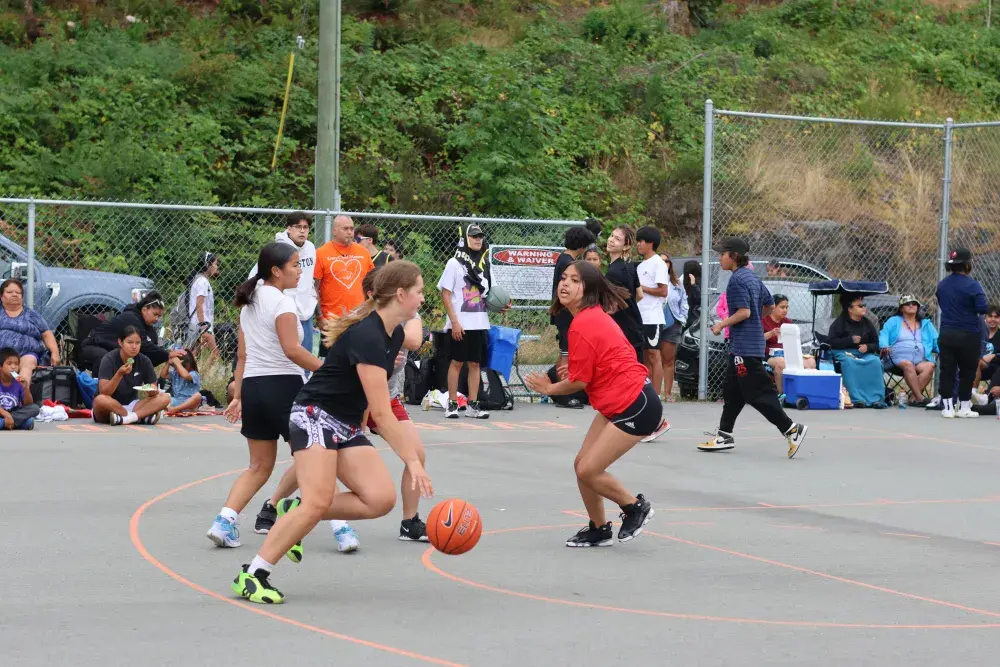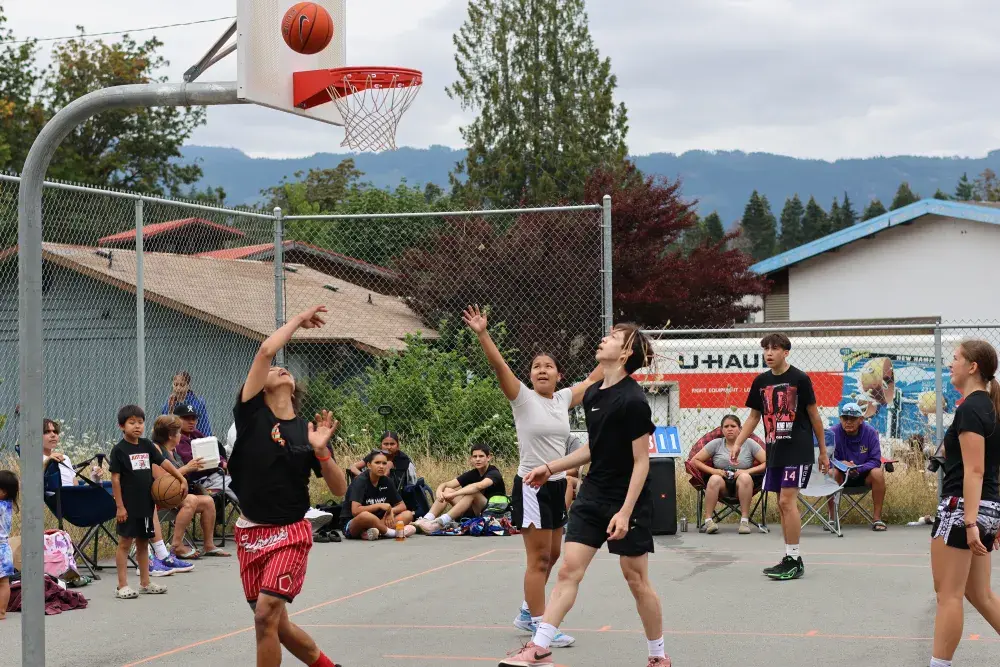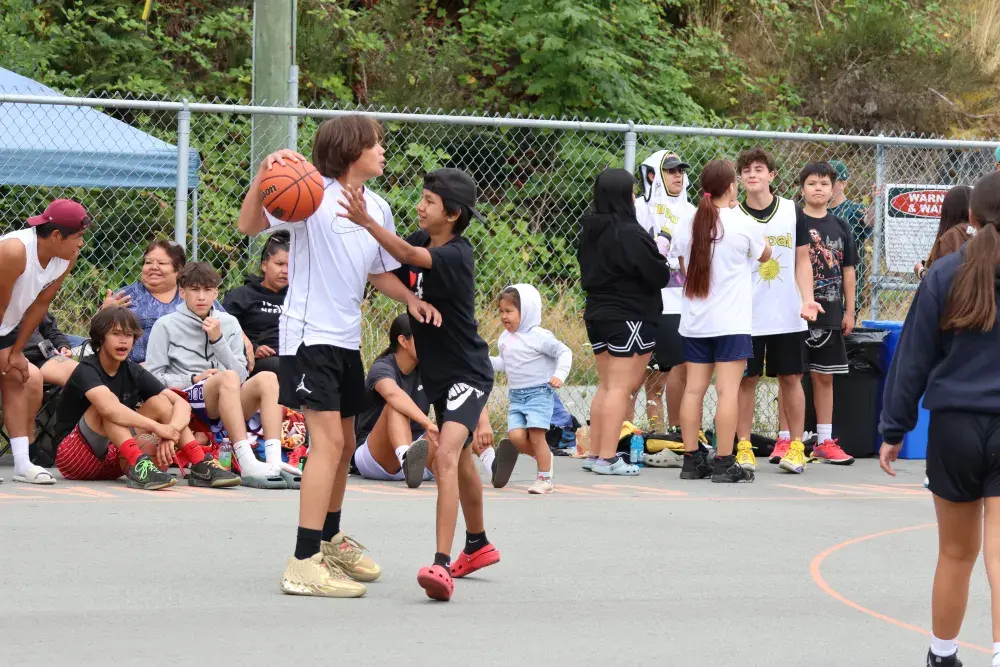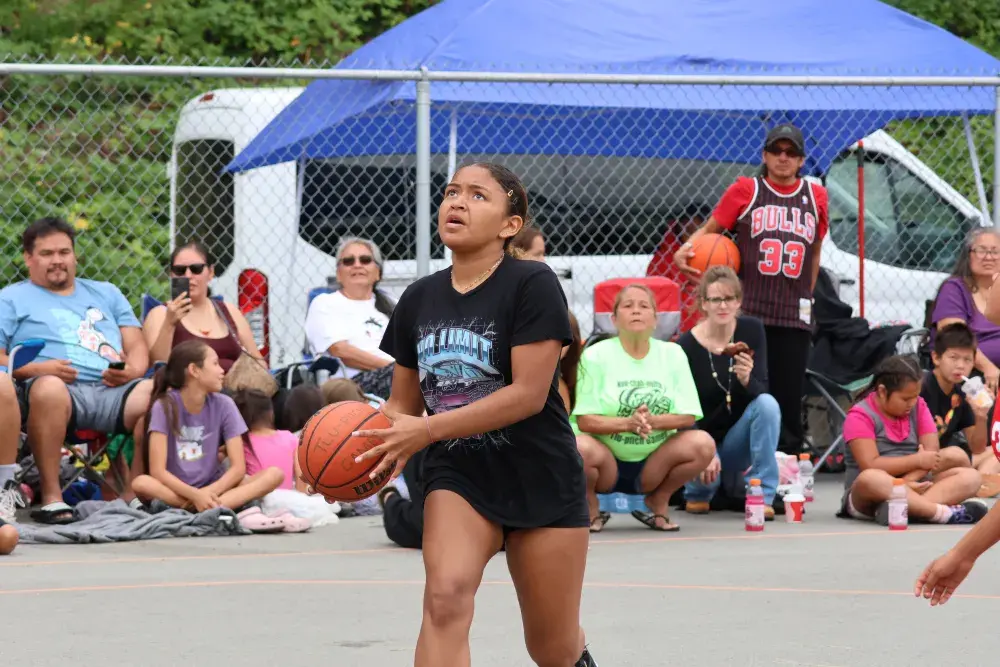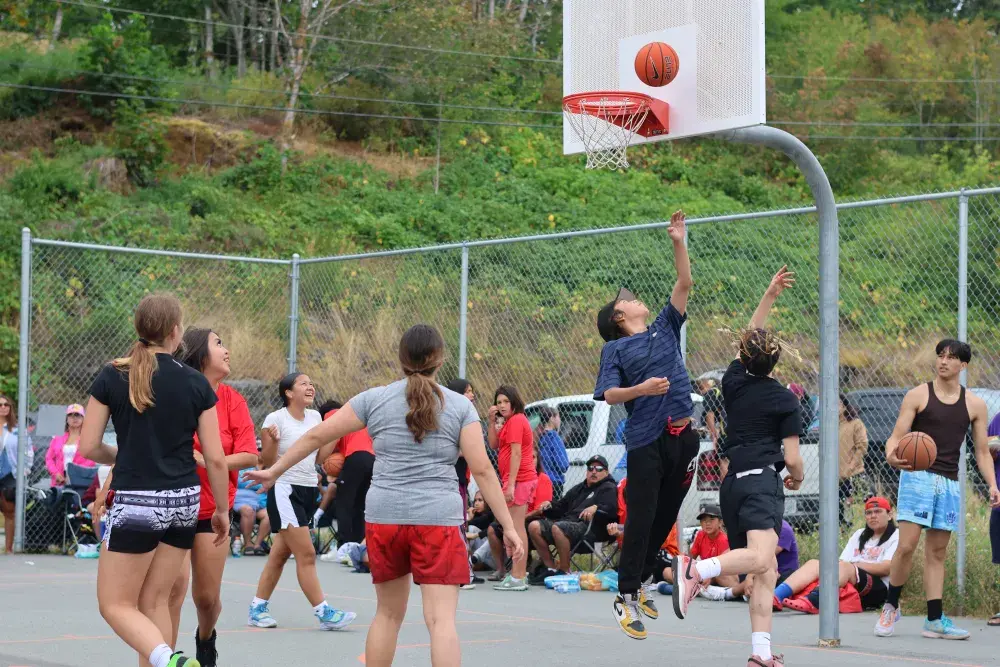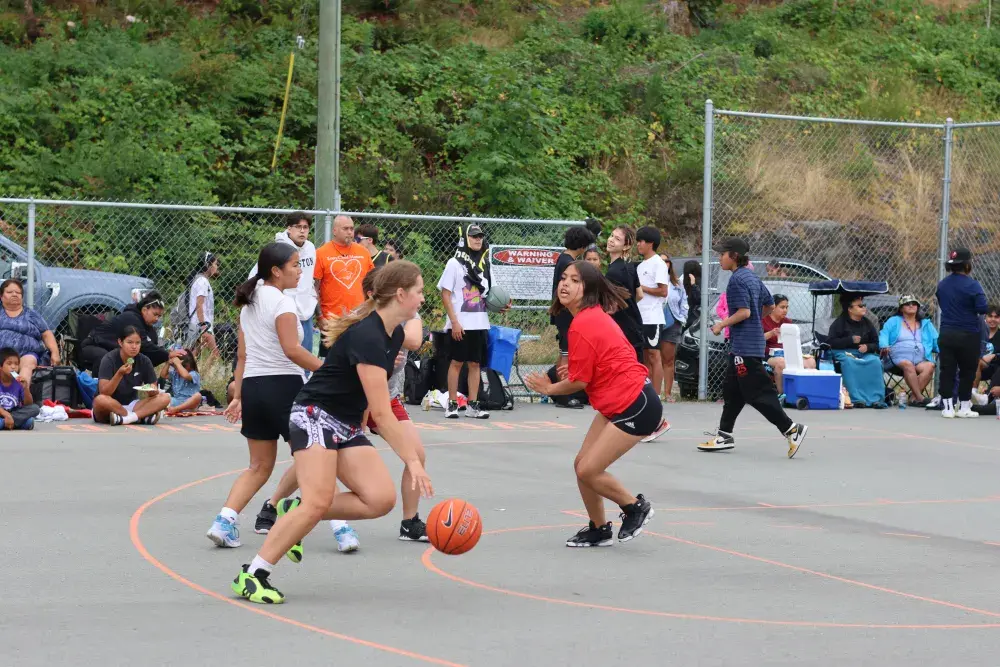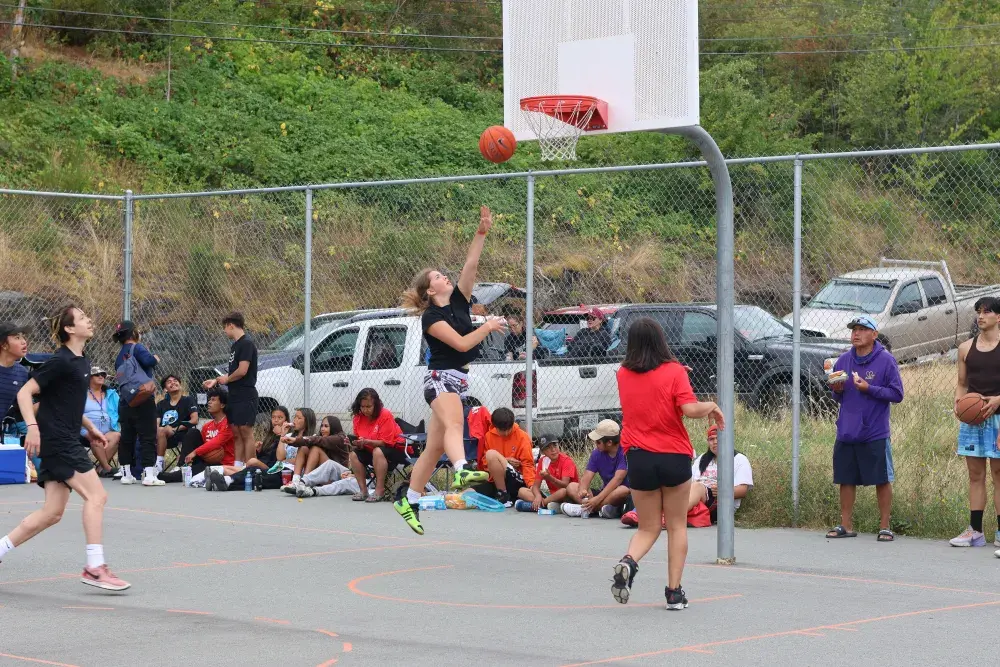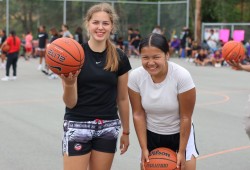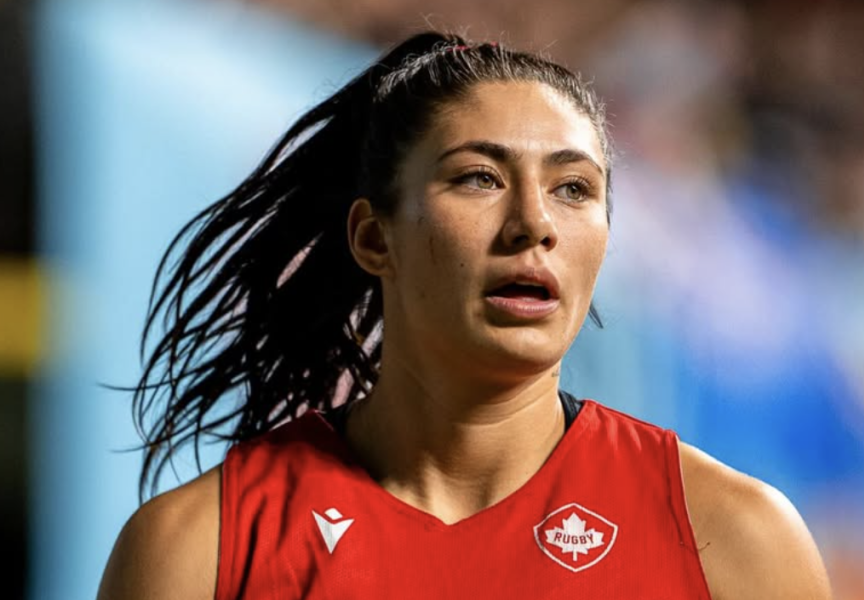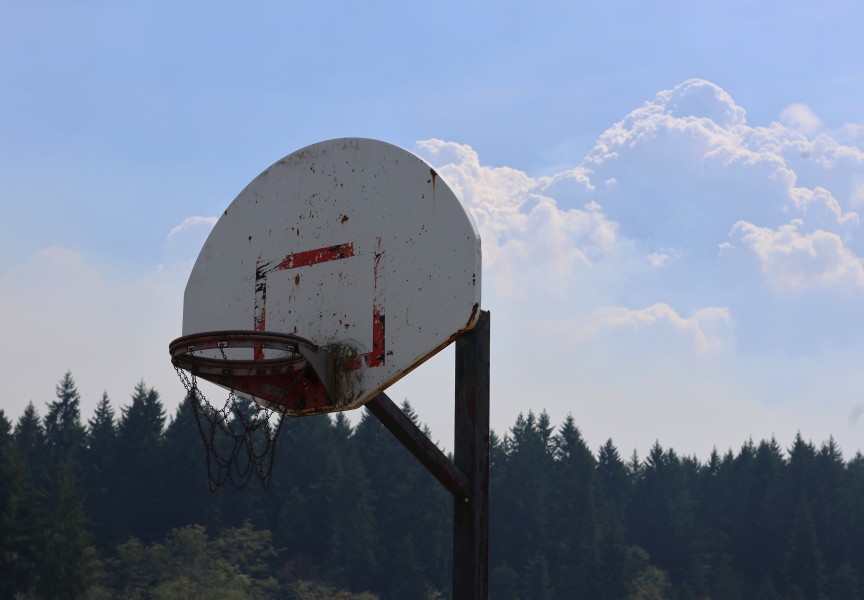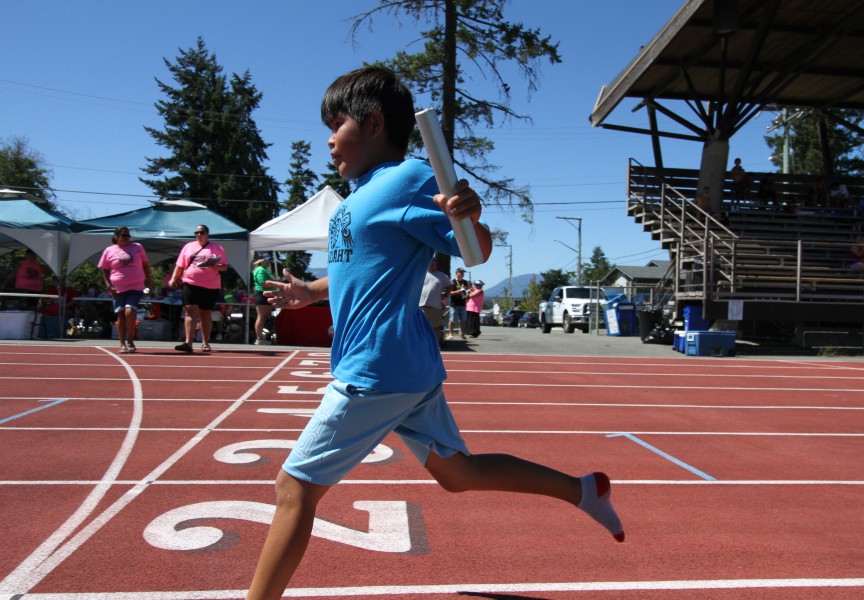Nuu-chah-nulth youth played their hearts out during the Aug. 12 Tlu-piich Games 3x3 basketball tournament at Tseshaht’s outdoor, NBA-size court.
With 15 teams in the U13 division and nine teams in the U17, the summer hoops tourney brought together young players from all over Nuu-chah-nulth territory. Each game was 13 minutes long, split with a minute break. Players earned two points for sinking a three-point shot and one point for regular shots. Any fouls resulted in one point for the opposing team.
“It’s been a while. It’s nice for the Tlu-piich Games to make a strong comeback. They kind of broke-up because everyone started having their own regional games,” said Tla-o-qui-aht First Nation Dwayne Martin, who posted up with his camping chair to cheer on his daughters, Wiinuk, 17, and Helen, 12.
His daughters came up from Neah Bay, Washington where they live on the Makah Reservation.
“They are both high level. They travel all over the States. They are accomplished ball players,” Martin continued.
Wiinuk or ‘Nunu’ as her family and friends call her, helped her team Hot Dogs hustled their way to the top spot of the 3x3 basketball U17 tournament bracket.
“I didn’t expect to win,” said Tofino-based Tla-o-qui-aht/Ahousaht player Brielle Tom, the mastermind who brought the Hot Dogs together.
The Hot Dogs outscored two strong Ahousaht teams en route to their somewhat anticlimactic victory – all the kids just went on shooting hoops after the official time clock ran out.
Hot Dogs player Cassius Robinson, 15, sank a trio of spicy three-pointers in the final.
“Basketball is something that’s always there for me. It’s comforting. It’s like therapy,” he said.
Their fourth player, Vaughn Robinson, just came off winning a bronze at the B.C. Summer Games in the U14 basketball category.
“Brielle just asked me to play, so I showed up. I thought it would be fun to play with Cass,” said Vaughn.
Tseshaht First Nation opened Maht Mahs outdoor court in April 2022. It is built on the site of the Alberni Indian Residential School where Peake Hall once stood.
“I think basketball for Indigenous People has been healing, especially for the generational trauma that has happened throughout the years and especially for the first generation going through the generational trauma,” said 17-year-old Hannah Frank, a Tla-o-qui-aht Tribal Parks Guardian who grew up playing basketball with her brothers.
“I think basketball helped them. That was a way to escape. It was a way for them to have fun and a way for them to get communities and Nations together,” she said

